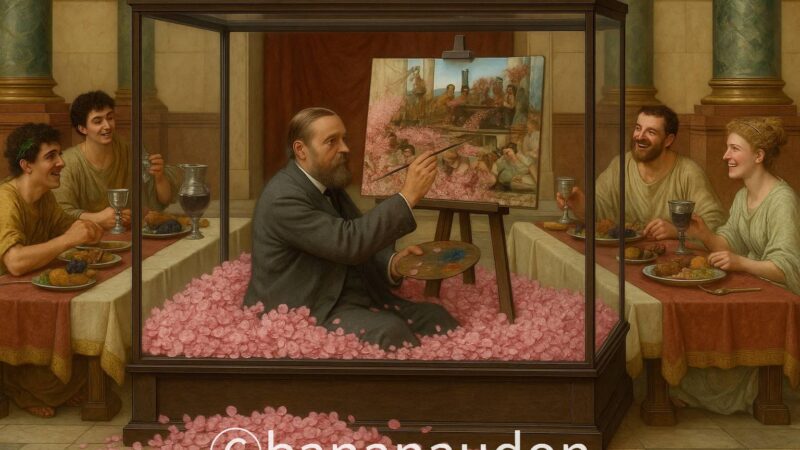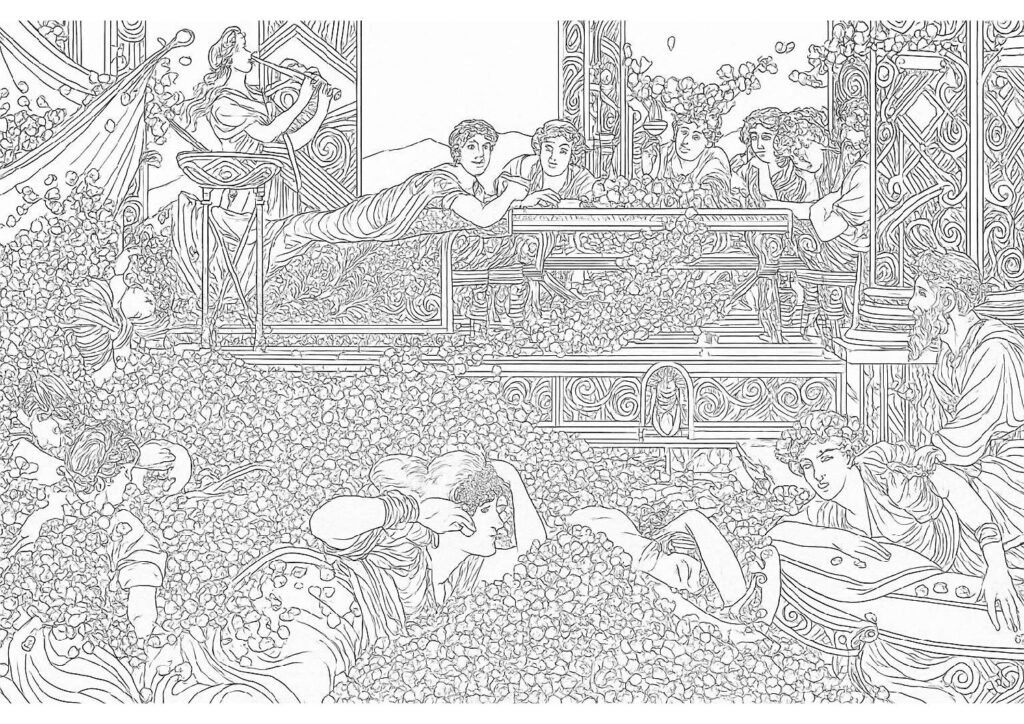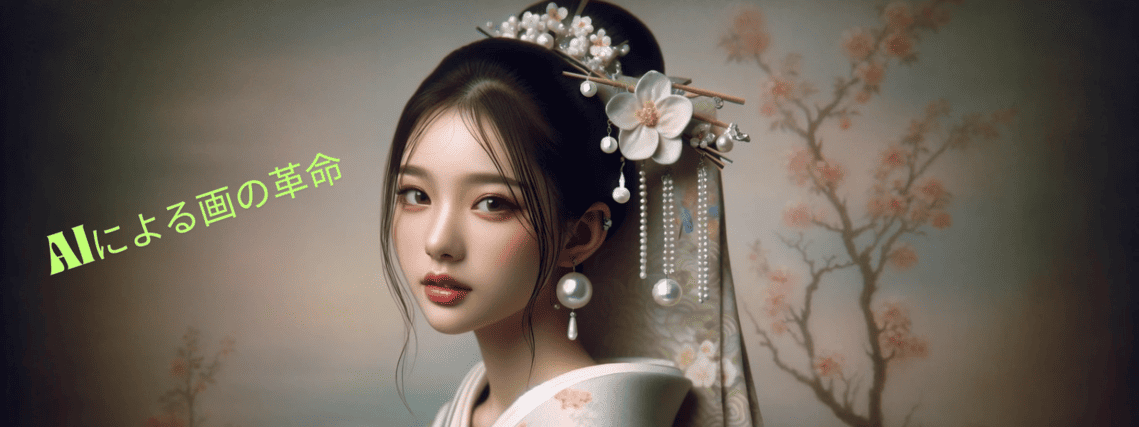The Artist in a Glass Case: Reinterpreting The Roses of Heliogabalus as a Metaphor for Art Imprisoned
2025.06.25更新
広告

What happens when the creator becomes the exhibit?
This reinterpretation of The Roses of Heliogabalus by Lawrence Alma-Tadema turns the decadent Roman feast into a powerful metaphor for the captivity of creativity and the role of the artist in a consumer society.
From Roman Decadence to Modern Display: A New Lens on Alma-Tadema’s Masterpiece
First Impressions
Upon first viewing this reinterpretation, what strikes immediately is the poignant irony of the creator becoming the exhibit. Inside a sealed glass case sits the painter, surrounded by a bed of pink rose petals. Outside, Romanesque revelers indulge in food and wine, their laughter contrasting the artist’s quiet labor. The man paints a scene that mirrors Alma-Tadema’s The Roses of Heliogabalus — or rather, recreates it.
But the inversion is deliberate: the painter, once master of the spectacle, is now a spectacle himself. This is no simple homage — it’s a layered visual metaphor for the commodification and confinement of artistic creativity in contemporary society.
Original Painting Background
- Title: The Roses of Heliogabalus
- Artist: Lawrence Alma-Tadema
- Year: 1888
- Current Location: Private Collection (the Spanish-Mexican billionaire businessman and art collector Juan Antonio Pérez Simón)
From Wikipedia, the free encyclopedia
 The Roses of Heliogabalus (Alma-Tadema) – Free Adult Coloring Page (PDF)
Download Free PDF (A4 print recommended) Download PDF Browse by Artist Browse by Theme Languages: JP | FR This free adult coloring page is inspired by the 1888 historical masterpiece The Roses of Heliogabalus by Sir Lawrence Alma-Tadema. Discover the artwork’s fascinating story and experience the therapeutic joy of coloring. What Is “The Roses of Heliogabalus”? Painted in 1888 by…
The Roses of Heliogabalus (Alma-Tadema) – Free Adult Coloring Page (PDF)
Download Free PDF (A4 print recommended) Download PDF Browse by Artist Browse by Theme Languages: JP | FR This free adult coloring page is inspired by the 1888 historical masterpiece The Roses of Heliogabalus by Sir Lawrence Alma-Tadema. Discover the artwork’s fascinating story and experience the therapeutic joy of coloring. What Is “The Roses of Heliogabalus”? Painted in 1888 by…
Historical Context
The painting is based on a notorious anecdote from the life of Roman Emperor Elagabalus (Heliogabalus), who reportedly smothered banquet guests under a deluge of rose petals dropped from a false ceiling. Alma-Tadema, a master of classical historical scenes, portrayed this moment with breathtaking opulence, emphasizing both sensory pleasure and silent threat.
Defining Characteristics
- Hyperrealistic detail in marble, textiles, and flora
- Ethereal light and pastel palette balanced with visual density
- The contrast between sensual beauty and underlying violence
- Deeply researched architectural and costume accuracy based on archaeological sources
Key Points of Reinterpretation
This reinterpretation diverges from Alma-Tadema’s original in concept, composition, and message:
1. The Artist as the Specimen
The painter, resembling Alma-Tadema himself, is now inside a glass case — contained, observed, and separated from the celebrants. He is no longer in control of the scene but is instead subjected to it. He’s both the creator and the captive.
2. Role Reversal of Audience and Subject
The surrounding figures are dressed in Roman attire, enjoying a staged feast. But they are no longer participants in the petals’ descent — they are modern voyeurs reenacting the original painting, seemingly unaware that the very artist they celebrate is now trapped within his own creation.
3. Shift in Atmosphere and Medium
While the original conveyed lushness, scent, and sensuality, this reinterpretation introduces cold glass and artificial lighting. The roses are still abundant, but they feel lifeless — a beautiful yet sterilized relic of creativity. This is a clear allegory for how art, once born of experience and sensuality, is now consumed under museum glass and digital screens.
Interpretation: Who Owns the Act of Creation?
This reinterpretation is a sharp critique of how art and artists are simultaneously revered and restricted. The glass enclosure symbolizes not only the art market and museums but also the pressures of public expectation and historical legacy.
Alma-Tadema himself, once wildly popular in the Victorian era, was dismissed as passé in the 20th century, only to be rediscovered decades later. This piece reimagines him as a ghost of aesthetic perfection, embalmed for posterity.
While the Roman banquet guests outside the case enjoy their feast and smile, the artist inside labors in silence — a striking image of modern artistic alienation.
Conclusion
This reinterpretation is not merely a tribute but a brilliant conceptual inversion. With impeccable technical execution and biting conceptual clarity, it challenges viewers to reconsider the role of the artist in contemporary society.
In this version, roses no longer intoxicate — they suffocate. The petals that once symbolized beauty now accumulate like soft prison bars. The reinterpretation demands we ask: Is the creator still free once his creation is celebrated? Or has he become another relic under glass?
